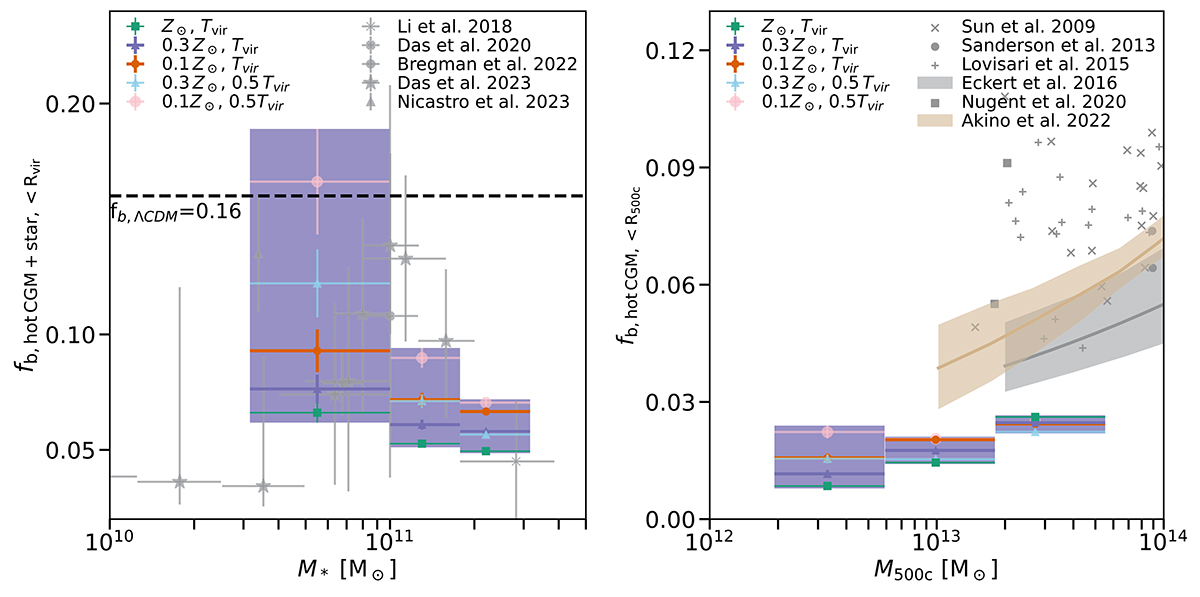Fig. 7.

Download original image
Baryon fraction as a function of M* given on the left. The baryon fraction is the sum of the stellar and the hot CGM within Rvir divided by the virial mass (fb, hot CGM + star, < Rvir = (Mhot CGM, < Rvir + M*)/Mvir). We assume that the metallicity abundance of the hot CGM is 0.1 Z⊙, 0.3 Z⊙ and Z⊙, and the temperature of the hot CGM is at virial temperature (Tvir) or half (0.5Tvir). The baryon fractions predicted with different metallicity abundances and temperatures are summarised in purple square. The dashed line (fb = 0.16) is the cosmological baryon fraction (Planck Collaboration VI 2020). The gray points are taken from tSZ measurements (Bregman et al. 2022; Das et al. 2023), and X-ray measurements (Li et al. 2018; Das et al. 2020; Nicastro et al. 2023). Right panel shows the baryon fraction as a function of M500c under assumptions of metallicity abundances and temperatures. The baryon fraction is the hot CGM within R500c divided by the M500c (fb, hot CGM, < R500c = (Mhot CGM, < R500c)/M500c).The gray points are gas fractions estimated from detected clusters and groups in X-ray (Sun et al. 2009; Sanderson et al. 2013; Lovisari et al. 2015; Eckert et al. 2016; Nugent et al. 2020; Akino et al. 2022).
Current usage metrics show cumulative count of Article Views (full-text article views including HTML views, PDF and ePub downloads, according to the available data) and Abstracts Views on Vision4Press platform.
Data correspond to usage on the plateform after 2015. The current usage metrics is available 48-96 hours after online publication and is updated daily on week days.
Initial download of the metrics may take a while.


